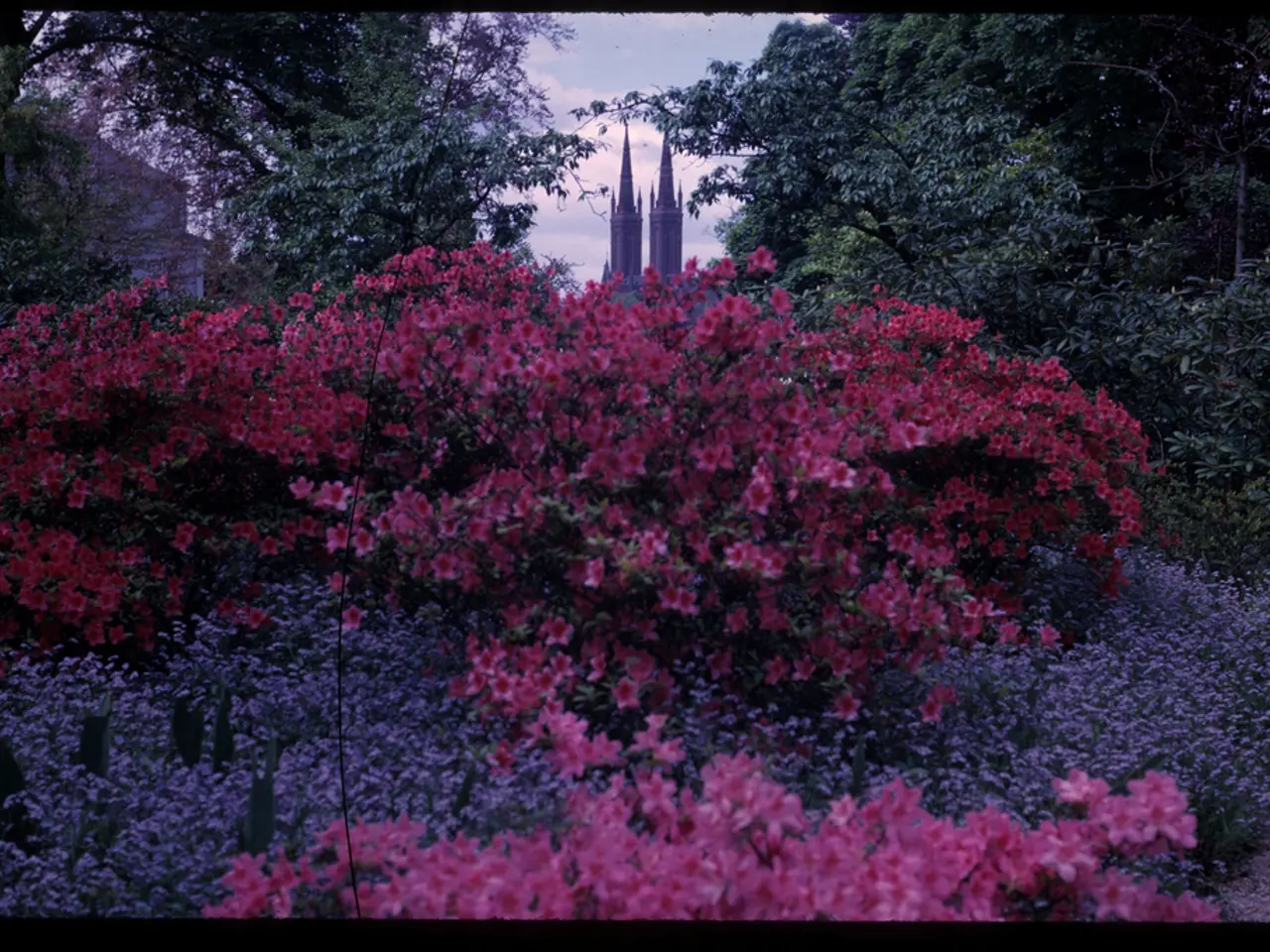Enhancing the Foundation's Landscape with Decorative Flora
Transforming Your Foundation Landscape with Ornamental Plants
Ornamental plants play a significant role in enhancing the aesthetic appeal of your home's exterior while offering various environmental benefits. Here's a guide on how to choose and maintain these decorative plants for your foundation landscaping.
1. Select Evergreen Shrubs for Year-Round Structure and Interest
Evergreen shrubs such as dwarf globe spruce and golden mop false cypress provide consistent foliage, color, and winter interest. These low-maintenance plants are resilient to drought, pests, and poor soils, making them ideal foundation "anchors." Combining evergreen shrubs with seasonal flowering plants can create a visually appealing landscape throughout the year.
2. Incorporate a Mix of Plant Types for Texture and Seasonal Color
Add ornamental grasses or sedges like Carex for year-round texture and minimal maintenance. Perennials such as catmint, abelia, and hostas offer seasonal color and attract pollinators like hummingbirds and bees. For example, catmint blooms through summer and is heat-tolerant, while abelia has colorful foliage and tubular flowers loved by pollinators.
3. Consider Fast-Growing and Showy Perennials for Impact
Plants like foxglove and agapanthus add curb appeal with impressive blooms in spring and summer. Foxgloves prefer moist, well-drained soil and grow best in cooler climates or as annuals in hot summers, while agapanthus is drought-tolerant and suitable for warmer zones, featuring pigeon blue or white flowers and glossy foliage.
4. Focus on Soil and Site Conditions
Ensure your selected plants match the light, soil drainage, and moisture conditions of your foundation area. Most foundation plants thrive in well-drained soil with full to part sun, though some, like hostas, prefer shade.
5. Maintenance Practices for Healthy and Attractive Foundation Plantings
- Water regularly after planting to establish roots, adjusting frequency for drought-tolerant species.
- Prune selectively to maintain plant shape and remove dead or diseased parts, especially for shrubs.
- Deadhead flowers (remove spent blooms) on perennials to encourage continuous blossoming.
- Weed consistently to reduce competition and maintain a neat appearance.
- Use mulch to conserve soil moisture and suppress weeds.
- Monitor for pests and diseases, though many recommended foundation plants are resistant.
6. Design Tips
- Plant in groups or clumps to enhance visual impact and create a cohesive look.
- Repeat colors and textures to unify the design.
- Incorporate focal points such as bold-colored shrubs or structural plants to draw attention.
- Mix plant heights and forms to create depth and interest.
By combining these selection and maintenance strategies, your foundation landscaping can become both aesthetically pleasing and environmentally beneficial, supporting biodiversity and improving microclimates around your home.
Summary Table of Key Plant Types for Foundation Landscaping
| Plant Type | Examples | Features | Environmental Benefits | |--------------------------|----------------------------|-------------------------------------|--------------------------------------| | Evergreen Shrubs | Dwarf globe spruce, Golden mop cypress | Year-round structure & color | Shelter for wildlife, erosion control | | Ornamental Grasses/Sedges | Carex | Texture, low maintenance | Habitat for insects | | Perennials | Catmint, Abelia, Hosta | Seasonal color, pollinator attraction | Nectar for pollinators | | Showy Perennials | Foxglove, Agapanthus | Bold flowers, curb appeal | Supports bees and hummingbirds |
Applying these choices thoughtfully according to your climate, soil, and aesthetics will maximize both beauty and environmental benefits in your foundation landscape.
1. Incorporate Evergreen Shrubs and Ornamental Grasses/Sedges into your home-and-garden foundation landscape for year-round structure, interest, and low maintenance.2. To create a visually appealing home-and-garden lifestyle, consider adding seasonal perennials and showy plants for varying textures, colors, and to attract pollinators such as hummingbirds and bees.




